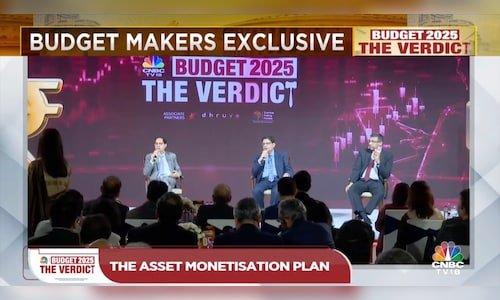
Finance Secretary Tuhin Kanta Pandey and DIPAM Secretary Arunish Chawla, in an exclusive discussion at CNBC-TV18’s ‘Budget 2025: The Verdict’ in New Delhi on Monday, addressed concerns regarding rising toll costs.
During the discussion, it was noted that highway toll charges have increased from 5-7% to 15-20% of journey costs over the past six years. Concerns were raised that the continued conversion of existing roads into toll projects could drive up logistics expenses, contradicting efforts to reduce transportation costs.
Responding to these concerns, Finance Secretary Pandey clarified that toll rates do not rise arbitrarily and that regulations mandate a minimum distance between toll plazas. He stated, “Toll rates remain unchanged, and the number of toll plazas cannot be increased arbitrarily. The policy on tolls is very clear—there must be a minimum distance between two toll plazas.”
Also Read: Exclusive | Not apprehensive of ‘tax base erosion’: Finance Secretary Tuhin Kanta Pandey
He further explained, “Whether the roads remain under NHAI or are transferred to another operator makes no difference. What is essentially being suggested is that NHAI itself should relax the policy by charging lower tolls and possibly increasing the length of roads covered under each toll.”
Pandey emphasised that adequate funding is crucial to maintaining infrastructure, warning, “If we do not ensure sufficient funding, we risk having poorer infrastructure and inadequate maintenance. We must take a balanced approach to this issue.”
DIPAM Secretary Chawla highlighted the trade-off between short-term toll costs and long-term benefits, stating, “This is a trade-off between a partial equilibrium effect and a general equilibrium effect. In the past, PPP models relied solely on simple BOT (Build-Operate-Transfer) and annuity models. However, over time, we have developed a variety of frameworks that have stabilised the highway sector.”
Chawla added, “The TOT (Toll-Operate-Transfer) model has been highly effective in maintaining highways while also enabling the redeployment of both budgetary and extra-budgetary resources into expanding our road network. This generates significant positive externalities in the long run. If we consider the economy as a whole, logistics costs will ultimately decrease.”
Also Read: India not protectionist; RBI monitoring rupee closely: Finance Secretary Tuhin Pandey
